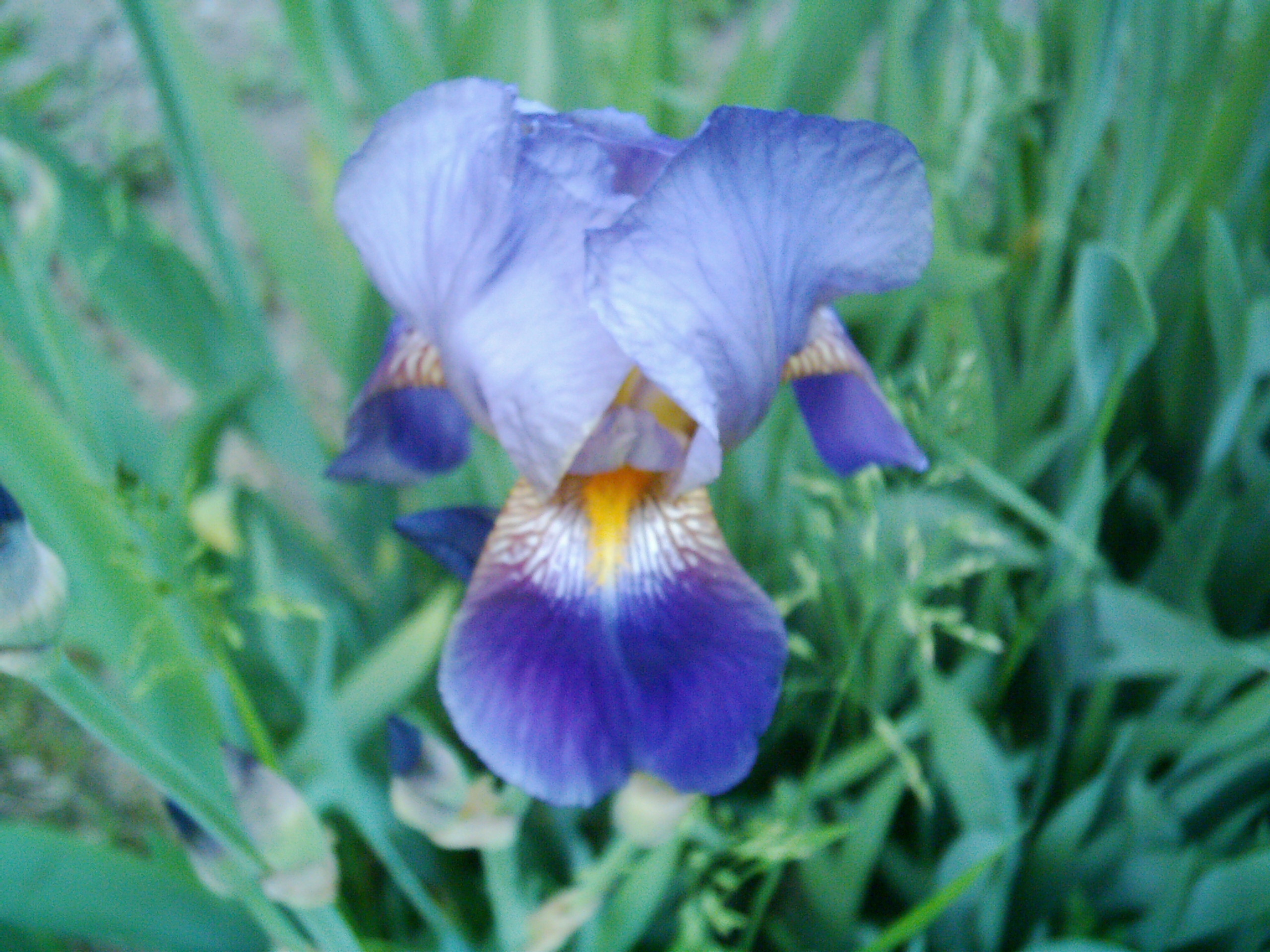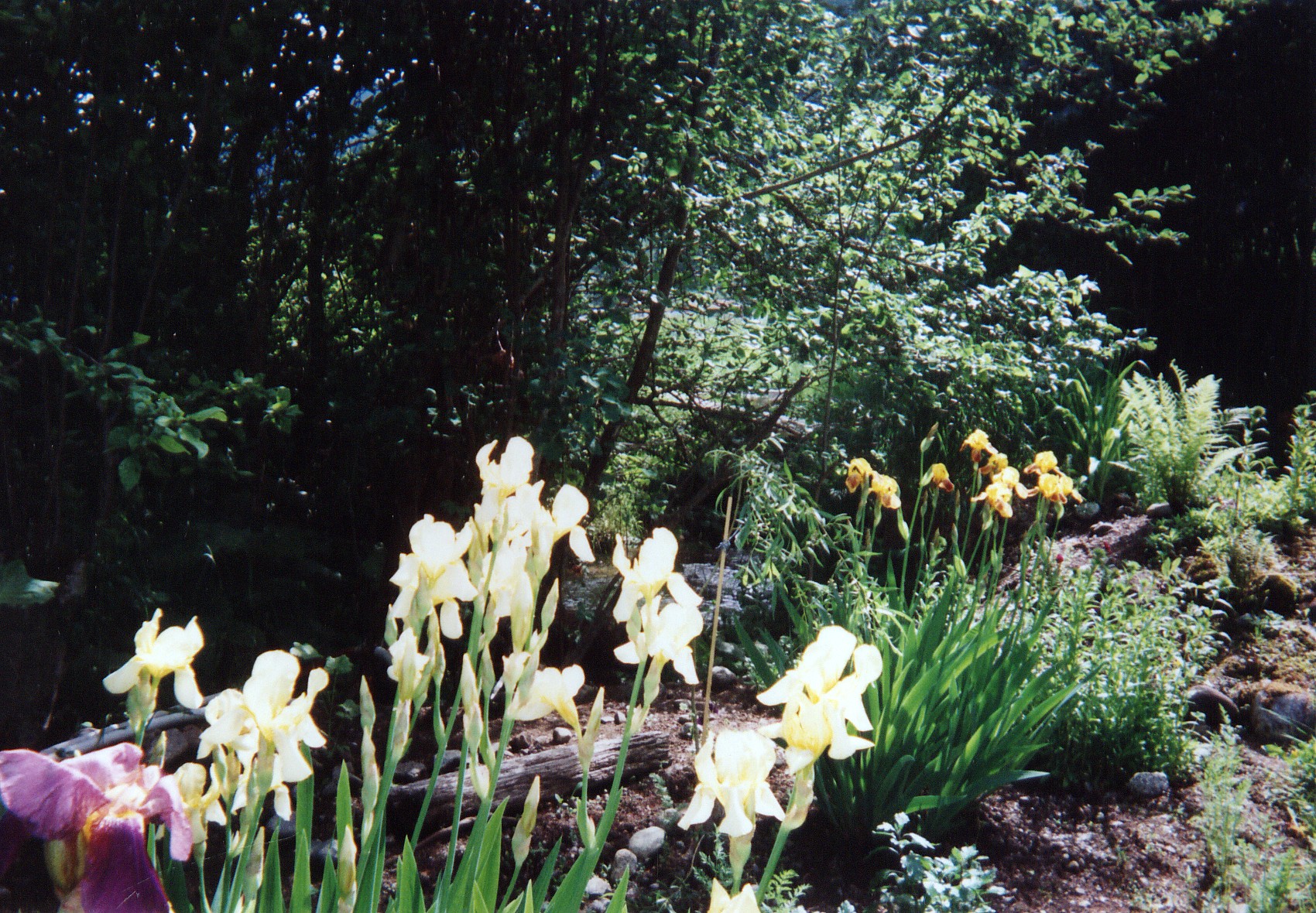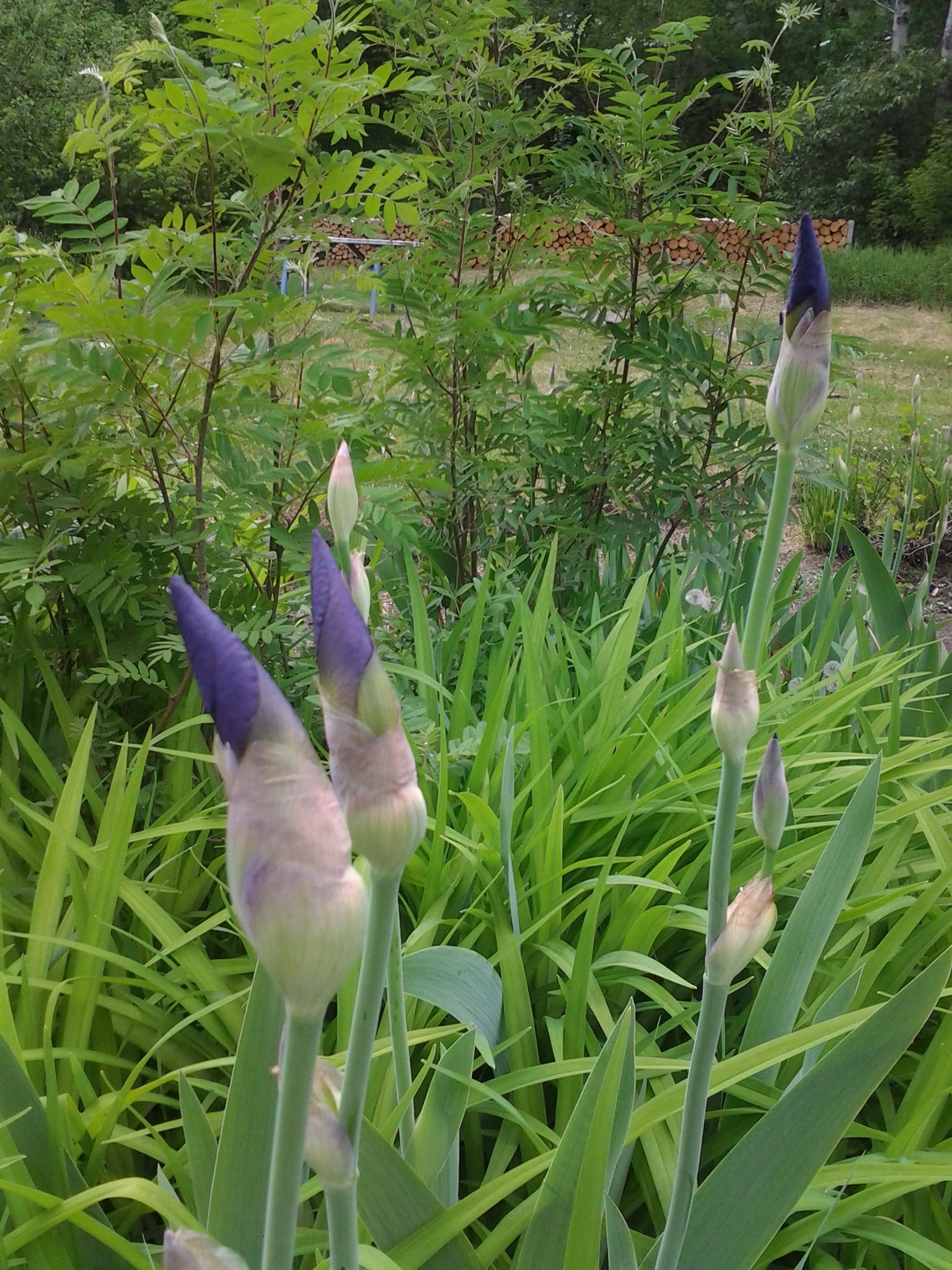Iris
Something so intricate and soft and so thin and perfect makes me wonder why God put so much special thought to something that He makes to last only a day or so and then fades away and then you have to wait for a whole year to see it again in reality.
But things like this just make me long all the more for heaven where nothing will ever, ever die away again.

Even then it is so thoughtful of our Creator to be mindful of us and give us a tiny glimpse of what heaven will be like as we behold the perfection of the flowers and gives us a small portion of pleasure that

He longs to fulfill to us in the glory to come.
The tubers of these flowers do want to keep growing, just give them some food and water and they will be a lovely sight as well.


Iris is a genus of 260–300, species of flowering plants with showy flowers. It takes its name from the Greek word for a rainbow, referring to the wide variety of flower colors found among the many species. As well as being the scientific name, iris is also very widely used as a common name for all Iris species, though some plants called thus belong to other closely related genera. A common name for some species is 'flags', while the plants of the subgenus Scorpiris are widely known as 'junos', particularly in horticulture. It is a popular garden flower.
The often-segregated, monotypic genera Belamcanda (blackberry lily), Hermodactylus (snake's head iris), and Pardanthopsis (vesper iris) are currently included in Iris.
The inflorescences are fan-shaped and contain one or more symmetrical six-lobed flowers. These grow on a pedicel or lack a footstalk. The three sepals, which are spreading or droop downwards, are referred to as "falls". They expand from their narrow base, which in some of the rhizomatous irises has a "beard" (a tuft of short upright extensions growing in its midline), into a broader expanded portion ("limb"), often adorned with veining, lines or dots. The three, sometimes reduced, petals stand upright, partly behind the sepal bases. They are called "standards". Some smaller iris species have all six lobes pointing straight outwards, but generally limb and standards differ markedly in appearance. They are united at their base into a floral tube that lies above the ovary (known as an epigynous or inferior ovary). The styles divide towards the apex into petaloid branches; this is significant in pollination.
The iris flower is of interest as an example of the relation between flowering plants and pollinating insects. The shape of the flower and the position of the pollen-receiving and stigmatic surfaces on the outer petals form a landing-stage for a flying insect, which in probing for nectar, will first come into contact with the perianth, then with the stigmatic stamens in one whorled surface which is borne on an ovary formed of three carpels. The shelf-like transverse projection on the inner whorled underside of the stamens is beneath the overarching style arm below the stigma, so that the insect comes in contact with its pollen-covered surface only after passing the stigma; in backing out of the flower it will come in contact only with the non-receptive lower face of the stigma. Thus, an insect bearing pollen from one flower will, in entering a second, deposit the pollen on the stigma; in backing out of a flower, the pollen which it bears will not be rubbed off on the stigma of the same flower.
The iris fruit is a capsule which opens up in three parts to reveal the numerous seeds within. In some species, these bear an aril.
wiki
God Weaving The Iris
Cold Water
"Look at that, ye thirsty ones of earth! Behold it! See its purity! How it glitters, as if a mass of liquid gems! It is a beverage brewed by the hands of the Almighty himself! Not in the simmering still, over smoky fires, choked with poisonous gases, and surrounded by the stench of sickening odors and rank corruptions, doth your Father in Heaven prepare the precious essence of life, the pure cold water; but in the green glade, and the grassy dell, where the red deer wanders, and where the child loves to play, there God brews it; and down, down in the deepest valleys, where the fountains murmur and the rills sing; and high up the tall mountain tops, where the naked granite glitters like gold in the sun, where the storm-clouds brood and the thunder storms crash; and away far out on the wide sea, where the hurricanes howl music, and the waves roar the chorus, sweeping the march of God-there he brews it, that beverage of life-health-giving water! And everywhere it is a thing of beauty, gleaming in the dew drop-singing in the summer rain-shining in the ice-gem, till the trees all seem turned into living jewels-spreading a golden veil over the setting sun, or a white gauze over the midnight moon-sporting in cataracts-sleeping in the glaciers-dancing in the hail-shower-folding its bright snow curtains softly about the wintry world, and weaving the many-colored iris-that seraph's zone of the sky-whose warp is the rain-drop of the earth, whose woof is the sunbeam of Heaven, all checkered over with celestial flowers, by the mystic hand of refraction-still, always it is beautiful, that blessed life-water! No poison bubbles on the brink; its form brings no sadness or murder; no blood stains its limpid glass; broken-hearted wives, pale widows, and starving orphans, shed no tears in its depth; no drunkard's shrieking ghost from the grave curses in the words of eternal despair; beautiful, pure, blessed, and glorious. Give me, then, forever, the sparkling, pure cold water!-Gough."
March 21, 1865 UrSe, ARSH 126
THE ORGAN OF SIGHT: THE EYE
"What is the organ of sight?"
"The eye; that wonderful organ whose healthful function enables us to see surrounding objects, and thus avoid many injuries, as well as experience many joys. The eye is of a globular form, composed of a number of humors, which are covered by membranes, and inclosed in several coats. On the front surface there is a slight depression, and in this is situated the crystalline lens. This is a body of considerable thickness and strength, and has the form of a double-convex lens. It is placed in a perpendicular direction immediately behind the pupil, and is kept in its situation by a membrane which is called its capsule. 1 In front of the crystalline lens, and occupying the whole of the front part of the eye, is the aqueous humor. It is composed principally of water, with a few saline particles, and a very small portion of albumen. A curtain with an opening in its center floats in the aqueous humor, but is attached to one of the coats of the eye at its circumference. This curtain is called the iris, and the opening in it is the pupil. It derives its name from the various colors it has in different individuals, and it is the color of the iris that determines the color of the eye. All the light admitted into the eye passes through the pupil, which is dilated or contracted according to the intensity of the light and power of the eye. The eye has three coats. The outer or sclerotic coat - the white of the eye - is that to which the muscles that move the eye in various ways are attached. Within the sclerotic coat is the choroid coat, composed mostly of blood-vessels and nerves. The inner coat is called the retina. It is either an expansion of the optic nerve, or composed of nervous filaments attached to it.
How is the eye and its various parts moistened?
There are what are called lachrymal glands, which constantly supply the eyes with moisture, not only when they are open and in action, but also when closed and quiet in sleep. There are two small openings from the eyes into the nose,
through which the fluid secreted by the lachrymal glands is conveyed. When these glands are much excited by irritations of the eyes or nose, or by strong emotion of the mind, they pour their fluid into the eyes faster than the small nasal ducts can convey it into the nose, and it flows down the cheeks in tears."
1868 JNL, HBH 127